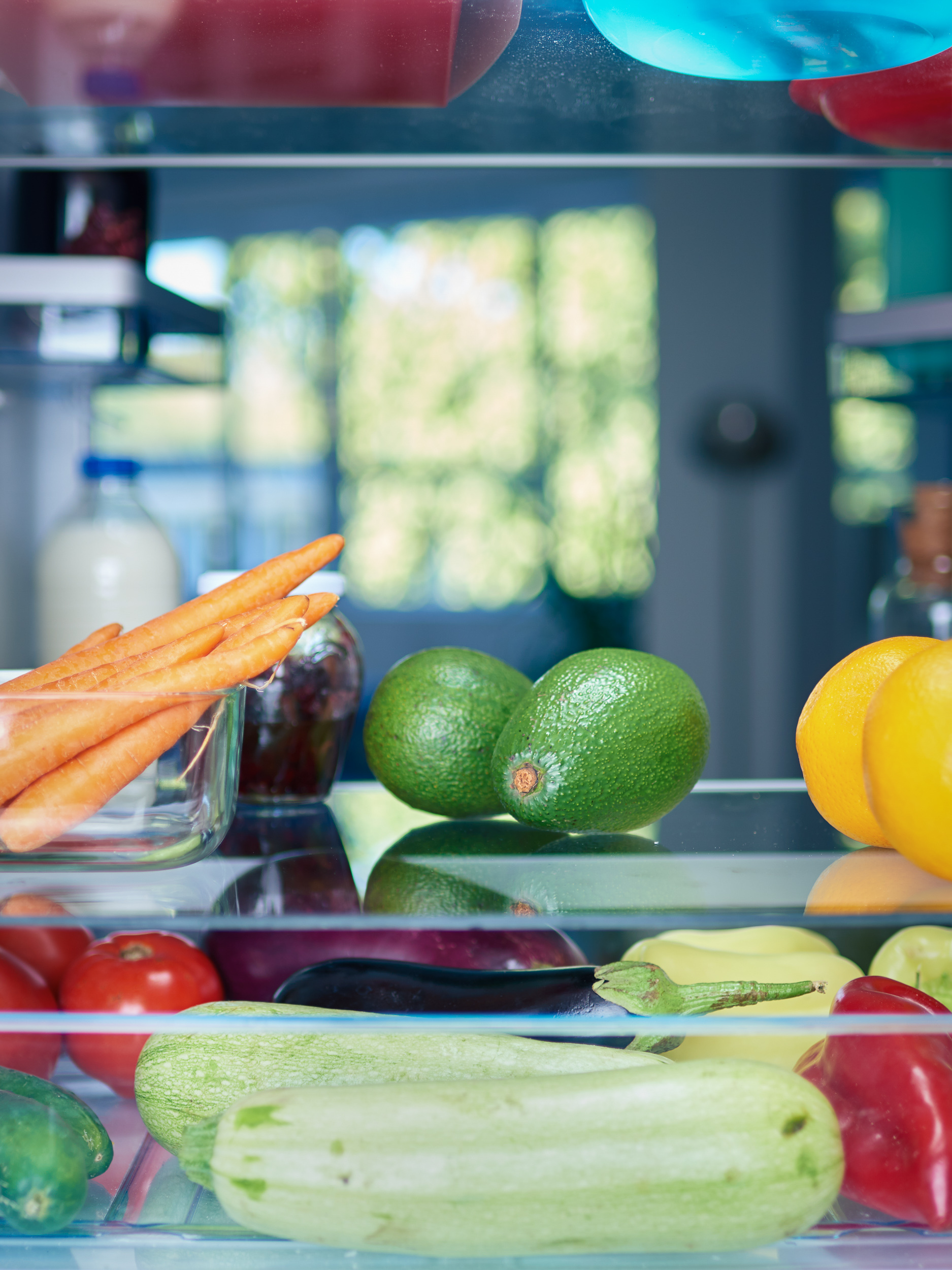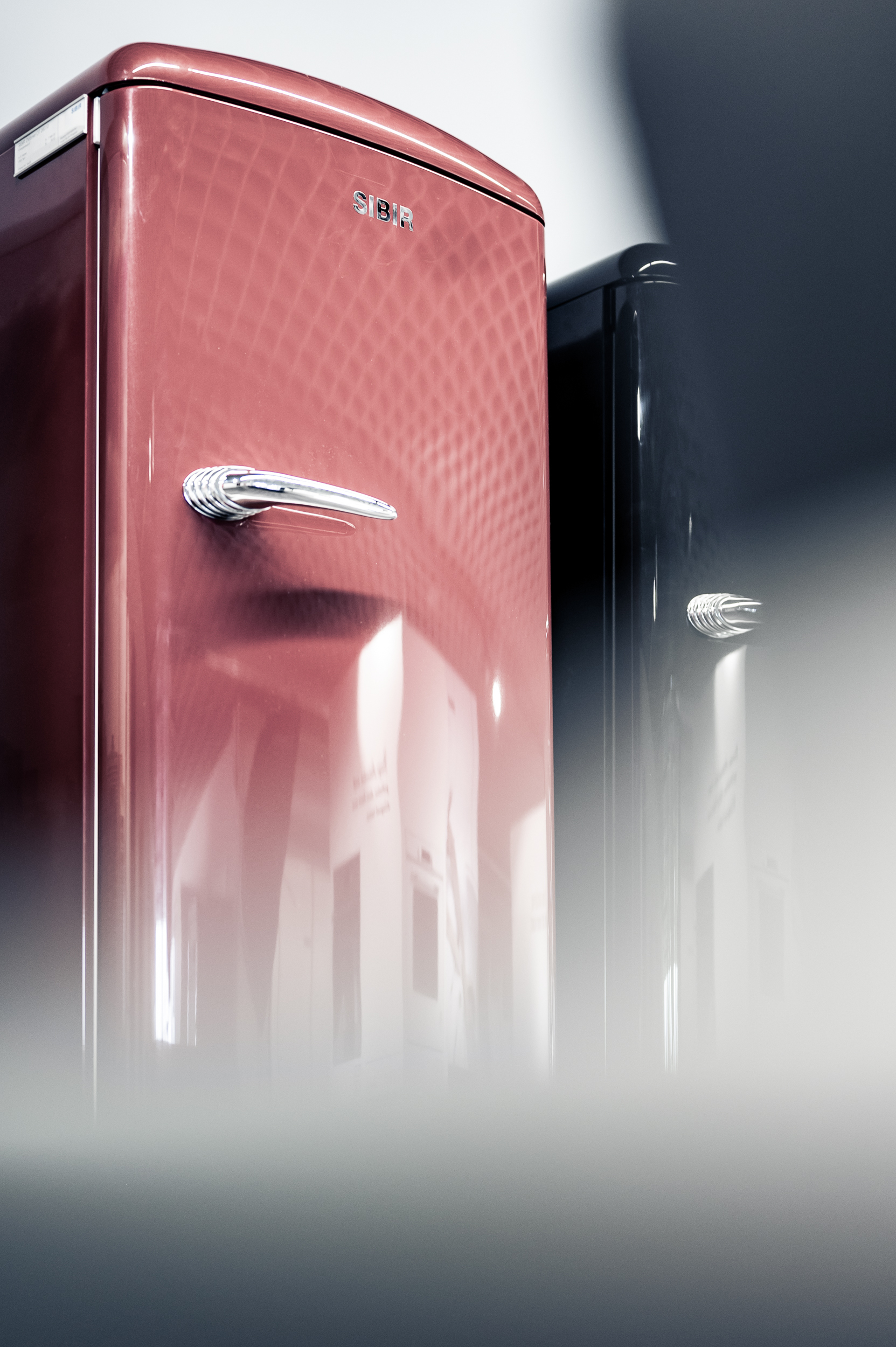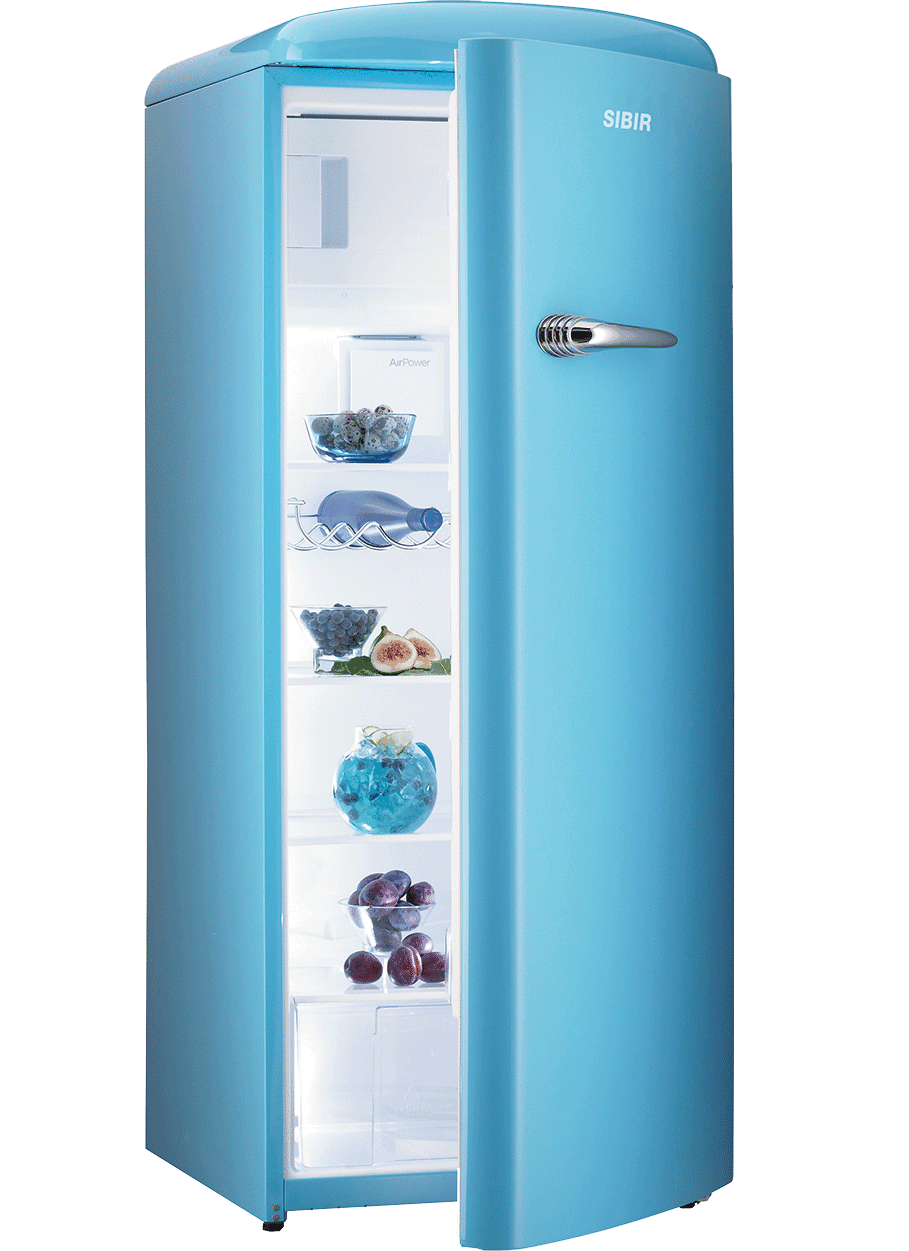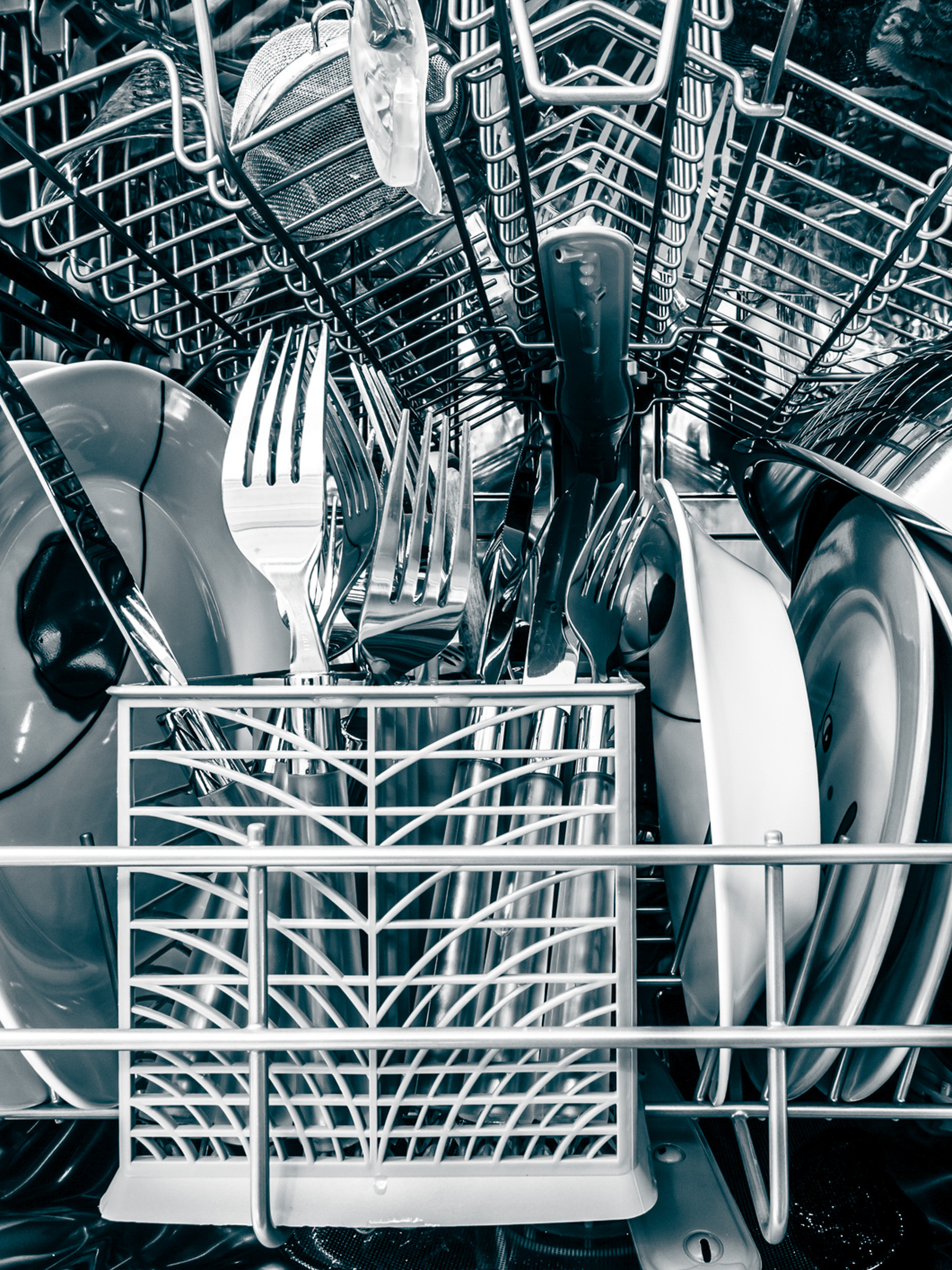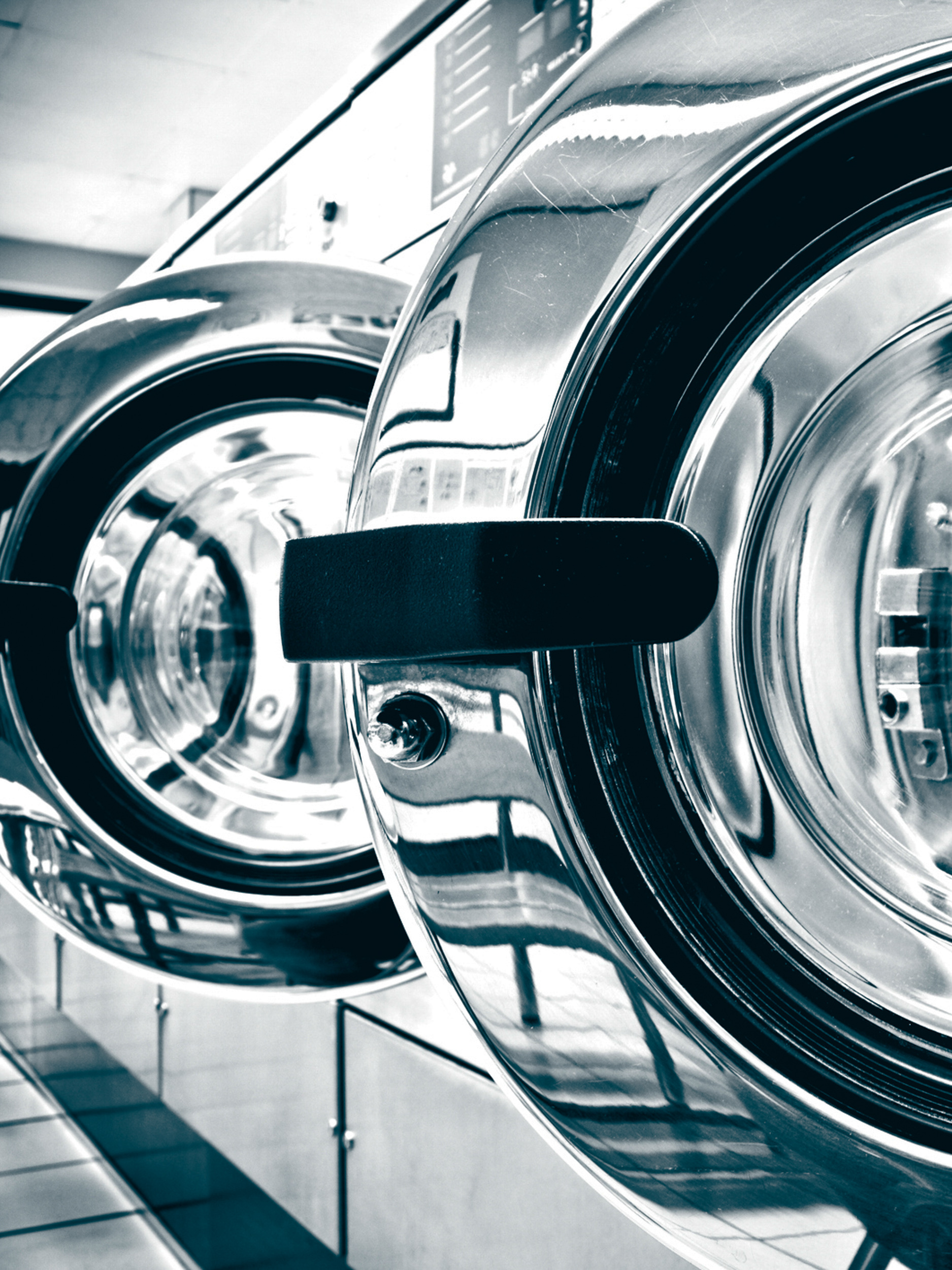Tip 1 – Proper organisation in the refrigerator starts with unpacking food
As a rule, all fresh food – except those packed in a protective atmosphere – should be taken out of its packaging and placed in a suitable container. This is especially true for plastic packaging. Alternatively, food can be stored in glass containers or reusable containers.
Tip 2 – Cold zones and ideal temperatures in the refrigerator
No matter how many shelves a refrigerator has, the appliance can always be divided into three cold zones. The coldest zone is always at the bottom. The exceptions are special compartments in modern refrigerators or the classic vegetable drawer.
The average temperature in the refrigerator should be around four degrees Celsius. This corresponds to level two on the temperature regulator. During extended hot periods in the summer, level three can be used temporarily. The temperature difference between the bottom glass plate and the top shelf can sometimes equal five degrees. Storage in an unsuitable compartment can therefore have a major effect on the shelf life of lots of food.
Tip 3 – Correctly organising the refrigerator
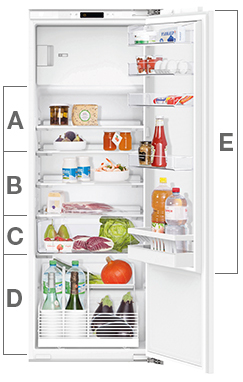
A) 5°C to 8°C - Warm air also rises in the refrigerator:
Products that stay fresh at five to eight degrees can best be stored in the upper part of the refrigerator. For example: sauces, soups and jams.
B) 4°C to 5°C - Dairy products belong in the middle section:
At five degrees, the middle of the refrigerator is the ideal place to keep all kinds of dairy products.
For example: quark, yoghurt, cream, cheese and butter.
Tip: Opened milk containers keep for longer in this zone than on the door shelf.
C) 2°C to 3°C - The bottom glass plate is suitable for meat and sausages:
Depending on the temperature settings of the refrigerator, the temperature at the bottom glass plate is around two degrees. Quickly perishable food in particular should be kept cool.
For example: meat, sausages and fish.
D) 9°C to 12°C - Using the fruit and vegetable drawer correctly:
Fruit and vegetables stay fresh and crispy for longer at eight to ten degrees.
For example: root vegetables, salad, herbs, berries and cherries.
Good to know: Potatoes and tomatoes should not be kept in the refrigerator. They lose their flavour in the cold.
E) Organising the refrigerator door correctly:
The temperature at the refrigerator door works like the zones of the internal sections at the same height. In other words, the bottom is colder than the top.
For example: eggs, butter, chocolate, ketchup, sweet drinks and suitable food.
Important note
The temperature at door compartments that do not lie directly in the area of natural air circulation (for instance, at the top in front of the freezer) may reach up to 16°C. These compartments are therefore not suitable for storing easily perishable food.
Saving energy
Do not place the appliance next to heating or in direct sunlight. The door should only be opened briefly and carefully closed again. The temperature inside the appliance should not be set below +5°C and the freezer temperature not below -18°C.
Cleaning
From time to time, the inside of the refrigerator should be cleaned with mild soapy water and then dried to ensure hygienic food storage. Occasionally rubbing the inside of the refrigerator with diluted vinegar has the effect of binding odours.
Tip 4 - What does not belong in the refrigerator?
There is lots of fresh food that should not be kept in the refrigerator. The basic rule of thumb is to consider the origin. Is the food exotic and does it like warmth? Then the food has no place in the refrigerator. Above all, this goes for tomatoes, mangos and bananas. But cucumbers, apples and pears likewise do not agree with the cold temperatures and are best stored in a fruit bowl outside the refrigerator.
Tip 5 – How to prevent food waste?
Keeping the refrigerator organised is a great advantage. After all, food you can’t see is easily forgotten and eventually perishes.
It can be quite easy to maintain an overview. Jars or pots can be sorted from large to small, tubes can be stored together in a box and packaged food can be arranged by expiry date, for example. The basic principle is food with the shortest shelf life should be placed in front.
